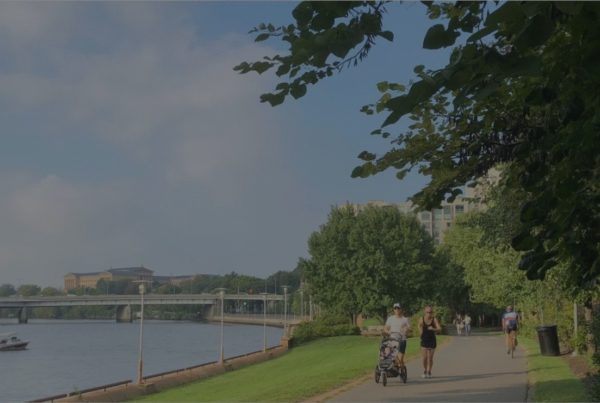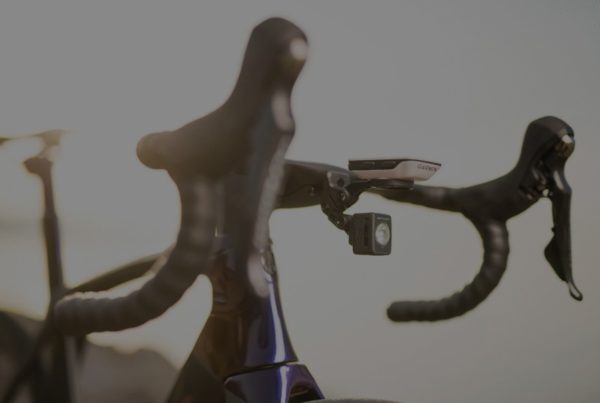By Bob Mionke
Legally Speaking with Bob Mionske – Blaming the victim
Published Apr. 10, 2008 on VeloNews
Bob,
Thank you for an outstanding article on the facts and media bias in the fatal Cupertino accident. I wanted to let you know that in the wake of the accident the San Francisco Chronicle ran a story in which they analyzed accident data, and reported that “Bicyclists were twice as likely as to be at fault.”
D.C.,
Napa, California
Dear D.C.,
Thank you for the link, and for your kind comments. In “Bicycling & the Law,” I make the case that anti-cyclist bias is pervasive in the media. The first media accounts of the Cupertino tragedy serve as textbook examples of that bias at work. There is another unhealthy slant I discuss in my book, that of a bias in police accident reports. I’ve found numerous examples of how police choose to interview the driver, but fail to interview the cyclist, before erroneously concluding that the cyclist is at fault in the collision. And when the cyclist can’t be interviewed, because the crash was fatal, it’s even easier to get a one-sided account of how events unfolded. I’ve also encountered all-too-frequent examples of police reports concluding that safe — and legal — riding practices are erroneously interpreted by police officers as “cyclist error.”
With these factors in mind, let’s take a look at the Chronicle’s article, which appeared two weeks after the crash that claimed the lives of two promising Bay Area cyclists, and indeed, noted that crash in the second sentence of the article. Immediately after mentioning the Cupertino tragedy, the Chroniclereported that “large numbers of cyclists fail to follow the rules of the road, running stop signs and red lights, and drivers are becoming more aggressive.” Now an article about reckless scofflaws causing accidents, following right on the heels of a fatal crash, would be relevant if the fatal crash had been caused by reckless scofflaw cyclists.
But it wasn’t.
It was caused by a Santa Clara County Sheriff’s Deputy who is reported to have fallen asleep at the wheel. Reckless scofflaw cyclists had nothing to do with the fatal crash, and yet first the San Jose Mercury News, and then the San Francisco Chronicle, somehow saw a connection between what actually happened — a law enforcement officer falling asleep at the wheel and killing two law-abiding cyclists — and what they wanted to report — reckless scofflaw cyclists causing accidents. And in fact, the Chronicle only got around to reporting that “No one has suggested that cyclists Kristy Gough, 30, of San Leandro and Matt Peterson, 29, of San Francisco who were killed in the March 9 accident on Stevens Canyon Road in Cupertino, were at fault” towards the end of the article—after spending considerable space reporting on the recklessness and scofflaw behavior of cyclists. And even after reporting that it was not “suggested” that the two victimes “were at fault,” the Chronicle immediately reverted to painting a portrait of reckless scofflaws.
I don’t think anybody would object to reporting on road safety — after all, it is a matter of public interest. But shouldn’t that reporting be free of bias? What possible purpose could be served by linking stories of reckless and scofflaw cyclists to a tragic crash in which two law-abiding cyclists were killed? For that matter, what possible purpose could be served by reporting on cycling and road safety without discussing the most common road hazards cyclists face: inattentive drivers, distracted drivers, impaired drivers, aggressive drivers and road ragers? Reading the Chronicle’s analysis, it would be easy to conclude that cycling “accidents” happen because all cyclists are reckless scofflaws.
Furthermore, it appears the Chronicle’s conclusions are largely drawn from its analysis of police accident reports. The problem with reaching that conclusion, however, is that the underlying data — the police accident reports — are notoriously unreliable, because of the biases inherent in them: Law enforcement failure to interview the cyclist involved, and law enforcement interpretation of safe and legal riding practices as unsafe and/or illegal.
Take, for example, the data discussed in the Chronicle article that indicates that the most common violation for cyclists was “unsafe speed.” What exactly does that mean? We know that in the case ofLloyd Clarke, “unsafe speed” meant that as Lloyd was proceeding straight through an intersection in Incline Village, a 17 year old driver made a left turn, directly into his path, violating his right of way and killing him instantly. The police didn’t seem at all concerned about that illegal left turn, however. Instead, they reported that Lloyd had been riding “at a high rate of speed.” One month later,Brett Jarolimek was proceeding straight through an intersection in Portland when a garbage truck turned right, across his right of way. He too was killed instantly, and the Portland Police bent over backwards to blame the victim for riding at an “unsafe speed,” going so far as to invent an imaginary statutory requirement that the driver must “perceive” that he has to yield the right of way in order for a violation to have occurred.
We know what happened in Lloyd’s and Brett’s crashes; their right of way was violated, and the police blamed them for “speeding.” How many other crashes where the cyclist was blamed for speeding — remember, this is what the Chronicle identifies as the leading cyclist-at-fault collision — were actually crashes involving a driver violating the cyclist’s right of way? A few more? A lot more? All of them? And how would accurate police reporting of the causes of those and other crashes affect the conclusion that cyclists are twice as likely to be at fault in crashes? We’ll probably never know, but we do know that until law enforcement officers begin reporting what actually happened, rather than what their biases tell them happened, we’ll continue to get reports skewed by false tales of speeding cyclists, and newspapers will continue to report statistics skewed by the erroneous conclusions of those biased reports.
Now, just to be clear, I’m not saying that cyclists blowing stops isn’t a fair subject for public discussion. They’re not only thumbing their nose at everybody else on the road, they’re providing the ammunition to those who want to restrict our rights to the road. But let’s at least have an honest discussion — not only did scofflaw cyclists have nothing to do with the tragic crash in Cupertino, they didn’t even register as a significant enough blip in the crash data for the Chronicle to discuss as a factor in cyclist-at-fault crashes. Instead, the Chronicle noted that the two most common cyclist-at-fault crashes involve cyclists traveling at an unsafe speed, and cyclists traveling on the wrong side of the road. Now, if the Cupertino crash wasn’t caused by red light runners, and they don’t even register as a significant factor in the crash data, why do an entire story on them in an article that is ostensibly about improving road safety? Why not, instead, discuss the actual factors that contribute to cyclist crashes?
It’s hard to escape the conclusion that the Chronicle used the senseless deaths of two law-abiding cyclists and an ostensible concern for traffic safety as cover to write the article it really wanted to write — a sensationalist rant about scofflaw cyclists. Following on the heels of tragedy, it was poor journalism, and in poor taste.
Bob
(Research and drafting provided by Rick Bernardi, J.D.)
This article, Blaming The Victim, was originally published on VeloNews on April 14, 2008.



